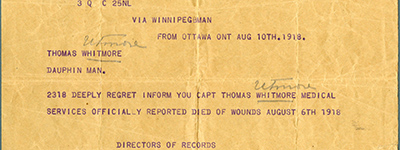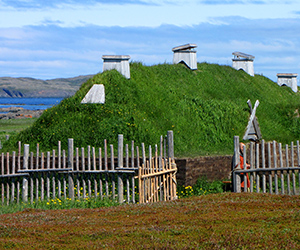CANADA HISTORY - Govenors General
Lord Stanley

Frederick Arthur Stanley, the 6th Governor General of Canada, is perhaps best known today as the man who donated the Stanley Cup, a trophy that has become a symbol of hockey excellence and a cultural icon in Canada. However, his contributions as Governor General extended far beyond this famous donation. Born into British nobility and deeply involved in British politics, Stanley’s appointment to Canada in 1888 marked a new chapter in his career, one that connected him with the vast geography, people, and burgeoning national identity of the young Dominion of Canada. This detailed article explores his life, accomplishments, and the events that shaped his tenure as Governor General, including his enduring legacy in Canadian sports and culture.
Early Life and Career
Frederick Arthur Stanley was born on January 15, 1841, in London, England, into one of Britain’s most prestigious noble families. He was the son of Edward Stanley, the 14th Earl of Derby, a prominent British statesman who served three terms as Prime Minister. The young Stanley grew up in a family steeped in public service and politics. He was educated at the elite Eton College and later attended the Royal Military College, Sandhurst, where he was commissioned into the prestigious Grenadier Guards.
Stanley’s military career was short-lived, as he quickly turned to politics, a more natural fit given his family’s political legacy. In 1865, he was elected to the British House of Commons as a Conservative MP. Over the next two decades, Stanley held several important positions in the British government, including serving as Financial Secretary to the War Office and later as Secretary of State for War. His experience in public administration and his interest in imperial affairs made him an ideal candidate for higher office.
Stanley’s most prominent role before coming to Canada was as Secretary of State for the Colonies from 1885 to 1886. This position gave him direct responsibility for overseeing the British Empire’s vast colonial territories, and it was during this time that he gained a deeper understanding of the Empire’s complexities and challenges. His involvement in colonial governance set the stage for his later appointment as Governor General of Canada.
Appointment as Governor General of Canada
In 1888, Stanley was appointed Governor General of Canada, succeeding Lord Lansdowne. His appointment came at a time when Canada was still solidifying its identity as a self-governing Dominion within the British Empire. Stanley arrived in Canada with his wife, Lady Constance Villiers Stanley, and their children. They took up residence at Rideau Hall in Ottawa, where they became beloved figures in Canadian society.
Stanley’s tenure as Governor General was marked by a genuine affection for the country and its people. Unlike some of his predecessors, Stanley did not see the position merely as a ceremonial role. He actively engaged with Canadians from all walks of life, traveling extensively across the country to better understand its diverse regions and cultures. His travels included visits to remote parts of Canada, where he met with Indigenous peoples and explored the rugged landscapes that so captivated him.
Stanley particularly enjoyed the outdoors, and he quickly established a fishing camp, "Stanley House," on the Baie des Chaleurs in New Brunswick. This camp, near the famous Cascapedia River, allowed him to indulge in one of his favorite pastimes—salmon fishing. His love for outdoor pursuits, including hunting and fishing, endeared him to many Canadians, particularly in rural areas, where these activities were an integral part of life.
Friendship with Sir John A. Macdonald
One of the most significant relationships Stanley formed during his time in Canada was with Sir John A. Macdonald, Canada’s first Prime Minister. Stanley and Macdonald developed a close friendship, and the Governor General was deeply sympathetic to the aging leader’s declining health. During Stanley’s tenure, Macdonald’s health continued to deteriorate, and in 1891, he suffered a stroke. Stanley was reportedly very solicitous of Macdonald’s condition, recognizing the immense role the Prime Minister had played in shaping the country.
Stanley was in office when Macdonald passed away on June 6, 1891, marking the end of an era in Canadian politics. Macdonald’s death was a profound moment for the country, and Stanley played an important role in overseeing the official mourning period and ensuring that the transition of power to Macdonald’s successor, Sir John Abbott, was smooth. This period was also marked by the death of Alexander Mackenzie, Macdonald’s long-time political rival and former Prime Minister, who passed away in 1892.
The Stanley Cup and Legacy in Canadian Sports
Although Stanley’s term as Governor General included several important political and diplomatic events, his most enduring legacy in Canada is undoubtedly his contribution to hockey. A passionate sportsman, Stanley quickly became enamored with the game of ice hockey after watching a match at Montreal's Victoria Skating Rink in 1889. At the time, hockey was rapidly growing in popularity in Canada, but it lacked a formal structure or a symbol of national competition.
In 1892, inspired by his sons’ enthusiasm for the sport, Stanley decided to donate a trophy to be awarded to the best amateur hockey team in Canada. This trophy, originally called the “Dominion Hockey Challenge Cup,” would later become known simply as the Stanley Cup. Initially intended for amateur teams, the Stanley Cup eventually became the championship trophy of the National Hockey League (NHL) and is now considered one of the most coveted prizes in professional sports.
The Stanley Cup has become synonymous with Canadian identity, embodying the country’s passion for hockey and its deep connection to winter sports. Stanley’s simple gesture of donating the Cup has had an immeasurable impact on the development of hockey as Canada’s national pastime, and his name will forever be associated with the sport.
Other Contributions and Involvement in Canadian Society
Beyond his role in hockey, Stanley made several other contributions to Canadian society during his time as Governor General. He and Lady Stanley were active in promoting education and the arts, supporting various cultural institutions across the country. Stanley also maintained a strong interest in Canada’s natural resources and was a proponent of conservation, recognizing the importance of preserving Canada’s wilderness for future generations.
Stanley’s extensive travels across Canada, often by train or horseback, allowed him to meet with Canadians from all regions and walks of life. He visited the Rockies, which he found particularly striking, and his admiration for Canada’s landscapes was well-known. His willingness to engage with both rural and urban communities endeared him to Canadians, who appreciated his genuine interest in their lives and concerns.
Return to England and Later Career
In 1893, after five years as Governor General, Stanley returned to England. Shortly after his return, he succeeded to his father’s title, becoming the 16th Earl of Derby. This elevation brought new responsibilities, and Stanley resumed his political career in Britain, serving in several high-ranking public offices. Among these was his role as Lord Mayor of Liverpool and later as Chancellor of the University of Liverpool, where he played a significant role in advancing education and civic engagement.
Despite his return to British politics, Stanley maintained a lasting affection for Canada and its people. His legacy in Canada, particularly through the Stanley Cup, continued to grow long after his departure.
Death and Legacy
Frederick Arthur Stanley passed away on June 14, 1908, at his family estate, Knowsley Hall, in Lancashire, England. He was succeeded by his eldest son, Edward Stanley, the 17th Earl of Derby.
Stanley’s time as Governor General of Canada may have been relatively uneventful in terms of political crises or major constitutional challenges, but his legacy has had a profound and lasting impact on Canadian culture. His donation of the Stanley Cup has immortalized his name in Canadian sports, making him a beloved figure among hockey fans. The trophy he presented has become a symbol of excellence, perseverance, and competition in the sport of hockey, representing not only professional athletes but also Canada’s deep cultural connection to the game.
In addition to his contributions to sports, Stanley’s commitment to exploring Canada, engaging with its people, and promoting its cultural and natural heritage left a lasting impression. His genuine interest in the country’s development and his affinity for outdoor activities made him one of the more popular Governors General in Canada’s early history.
Frederick Arthur Stanley, the 6th Governor General of Canada, left an indelible mark on the country through his contributions to both sports and public life. His creation of the Stanley Cup, now one of the most iconic trophies in the world, ensured his place in Canadian history. His legacy extends beyond hockey, however, as his time in Canada was marked by a deep engagement with the country’s people, landscapes, and culture. Stanley’s tenure as Governor General reflected his appreciation for Canada’s potential and his desire to contribute to its growing sense of national identity. Today, he is remembered not only for his contributions to sport but also as a figure who embraced Canada’s natural beauty, culture, and diversity during a formative period in its history.
Cite Article : Reference: www.canadahistory.com/sections/documents/documents.html
Source: NA



